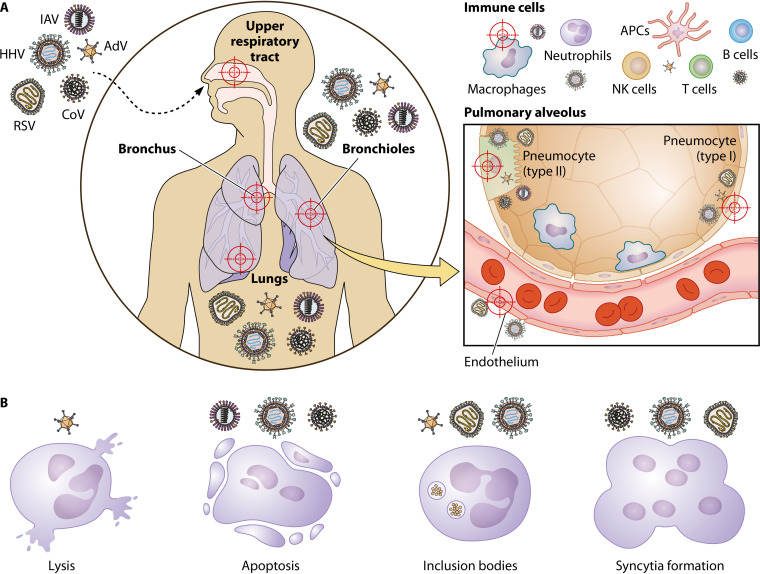FIG 1.
Respiratory viruses and their direct mechanisms of tissue damage. (A) Targets of virus infection. Viral infections by orthomyxoviruses (influenza A virus [IAV], for example) herpesviruses (HHV), adenoviruses (AdV), paramyxoviruses (respiratory syncytial virus [RSV], for example), and coronaviruses (CoV) commonly affect the upper and lower respiratory tract. Thus, all of them might cause of pneumonia, and infection might result in bronchiolitis. RSV is the most common cause of bronchiolitis and pneumonia in children younger than 1 year of age. Focusing on the pulmonary alveolus, CoV and IAV infect directly type II pneumocytes, and RSV, AdV, and HHV infect both type I and II cells. Endothelial cells are targeted by RSV and HHV. On the other hand, immune cells recruited to the site of infection, such as macrophages, neutrophils, T cells, NK cells, B cells, and antigen-presenting cells (APCs), can be infected by AdV, CoV, IAV, and HHV. (B) Direct mechanisms of tissue damage. After infection, viruses alter cellular homeostasis causing different types of damage or alterations. AdV are responsible for the direct lysis of the infected cells, while IAV, CoV, and HHV induce apoptosis of their target cells. Inclusion bodies are a consequence of AdV, RSV, and HHV infection, and syncytium formation has been described for cells infected by RSV, CoV, and HHV.

